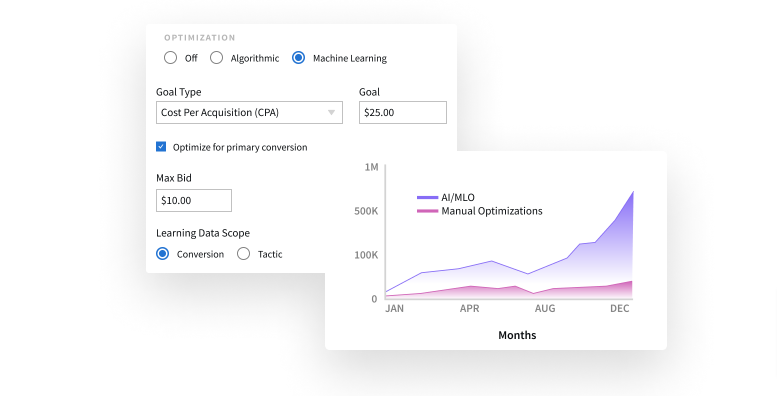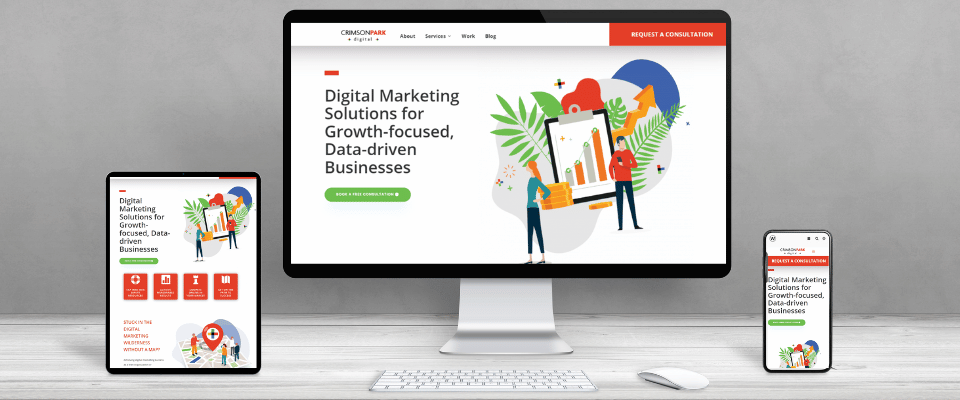How Programmatic Advertising Supports Brand Marketing
What is Programmatic Advertising?
Programmatic advertising is a form of digital advertising in which campaigns are optimized using AI (artificial intelligence) and machine learning. Rather than buying directly from publishers, programmatic campaigns are efficiently distributed automatically across a network of websites and placements, and without the need for human negotiations.
Real-time Bidding
Real-time bidding (RTB) is the way programmatic ads are bought and sold through real-time auctions. Real-time means that these transactions take place in the time it takes to load a webpage.
This is how real-time bidding works:
- A user opens a website, prompting a request to an ad exchange. The request includes the user’s data and information about the website.
- This information is combined and matched with available advertisers who match certain criteria.
- A real-time auction takes place automatically between the available advertisers, and the winning bidder has its ad displayed when the web page is finished loading.
All this happens in the amount of time it takes to load a web page, which on average is just 10 seconds on desktop and 15.3 seconds on mobile devices.

Using Basis for RTB with programmatic advertising vs. manual management.
Programmatic vs. Display Advertising
In traditional display advertising, brands choose which website they want to serve their ads on, based on what content they believe best matches their target audience. After negotiating an insertion order and securing display ad inventory, the ads would show up (called an impression) to anyone visiting that website, regardless of their relevancy or likelihood of becoming a new customer.
RTB and programmatic buying allow brands to reach an audience that is more hyper-targeted to their potential customers, and not siloed to one specific website or publisher. Programmatic ads are purchased on a case-by-case basis so that only people who align with your target audience are served an ad impression (view).
Between programmatic and display advertising, programmatic is the more successful digital marketing tactic using today’s technology. This is because programmatic is efficient, targeted, flexible, and scalable.
And the proof is in the pudding: spending by US marketers on programmatic ads is projected to be $133 billion in 2023, accounting for 91% of all digital ad spend.
Brand Marketing Using Programmatic Advertising
Brand marketing is an advertising strategy that grows awareness and relationships between brands and consumers. Messaging within brand marketing campaigns usually focuses on the entirety of the brand, rather than just one service or product to drive leads.
Incorporating brand marketing into a digital strategy requires planning for longevity, as it works best as a long-term program that continues to increase a brand’s recognition over time.
Because brand marketing takes time, it must constantly evolve to keep up with trends. Programmatic advertising can support this long-term strategy by reaching customers who are more likely to convert, with the efficiency that comes from machine learning.
Read on for two tips for increasing brand awareness using programmatic advertising.
Diversify Marketing Channels
The beauty of programmatic ads is their ability to reach your target audience almost anywhere on the internet. More than likely, your ideal persona exists across multiple digital channels and uses a variety of devices (i.e. work laptop, personal cell phone, family iPad).
Having an understanding of your target audience and their customer journey is vital to reach them efficiently, using programmatic advertising. Allow your campaigns’ RTB to reach your customers anywhere they can potentially see your brand, regardless of the device, platform, and operating system they’re using.
The more your ideal customer is exposed to your brand, the better your brand awareness campaigns will perform. On average, it takes between 6 and 8 marketing touchpoints to convert a prospect into a customer, and programmatic advertising is a great way to start them on that journey.
Use Creative Ad Formats
Traditional display ads are formatted as image banners that appear on a website or within a mobile app. Historically, these ads included a simple image or logo, a clear ‘call-to-action’ with a button, and some form of brand messaging.
Programmatic display advertising has the potential to include much more creative and fun ad formats. These include animations, videos, audio ads (streaming radio and podcasts), and ads that include interactive elements.
With the content flexibility that programmatic media allows, it’s important to match the best creative elements with what your target audience actually cares to see or hear, and engage with. When creative ad formats are smartly matched with customers’ desires and usual online behavior, your brand awareness increases along with traffic to your website.
CPD Case Study: Programmatic Ads Work to Drive Website Traffic
In late 2023, we launched a programmatic display campaign for a consumer goods company that, for confidentiality purposes, we will refer to as Decor Company. Within days, we started to see incredible results.
Campaign objective: Drive traffic to the website
Ad formats: display banners and audio clips
Timeline: Approximately 5 weeks
Results: 3mm+ impressions, $6.60 CPM (cost per 1k impressions), 95% video completion rate, 1,434 website visits
Note: Crimson Park Digital’s preferred partner for DSP programmatic advertising solutions is Basis, the #1-ranked DSP provider for 16 consecutive quarters by G2.
How to Use Programmatic Advertising
If you want to kick off the new year by optimizing ad spend and boosting your company’s return on investment (ROI) while effectively reaching your target audience, it’s time to consider incorporating programmatic advertising into your marketing strategy.
Our team of proven digital advertising experts can work with you to develop a programmatic advertising strategy that increases your brand’s awareness and delivers results.
FAQs
How much does programmatic advertising cost?
Programmatic advertising costs vary by industry, format, device, and targeting specifications. Costs for programmatic campaigns should be measured by CPM (cost per 1,000 ad impressions). Programmatic CPMs average between $0.50 to $10.00.
Is programmatic advertising expensive?
Programmatic advertising is an affordable marketing strategy for small businesses with limited budgets, because of its relatively low CPM.
What is real-time bidding (RTB) in programmatic advertising?
Real-time bidding is the application of machine learning to bid on ad placements that match your brand’s target audience during the amount of time it takes a web page to load.

